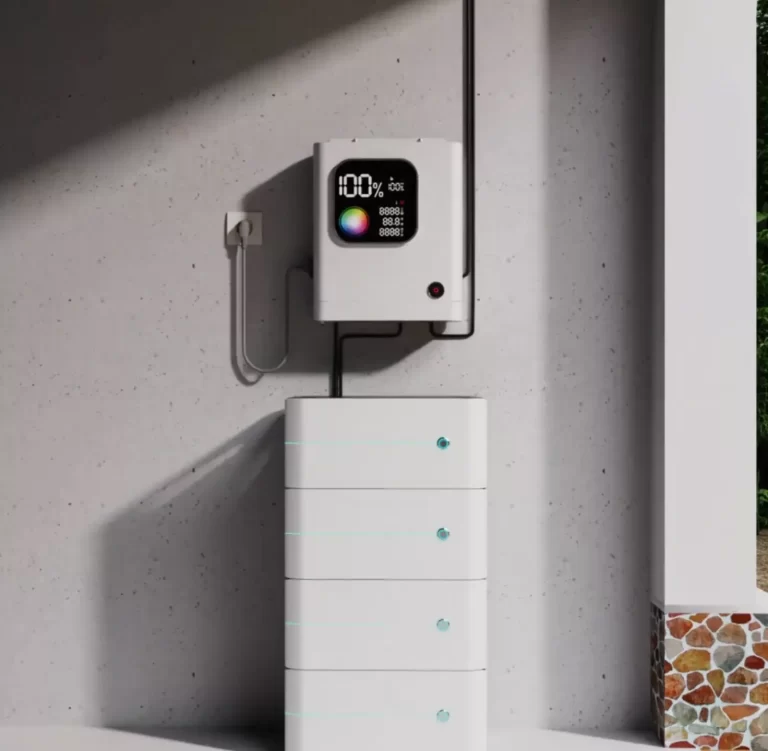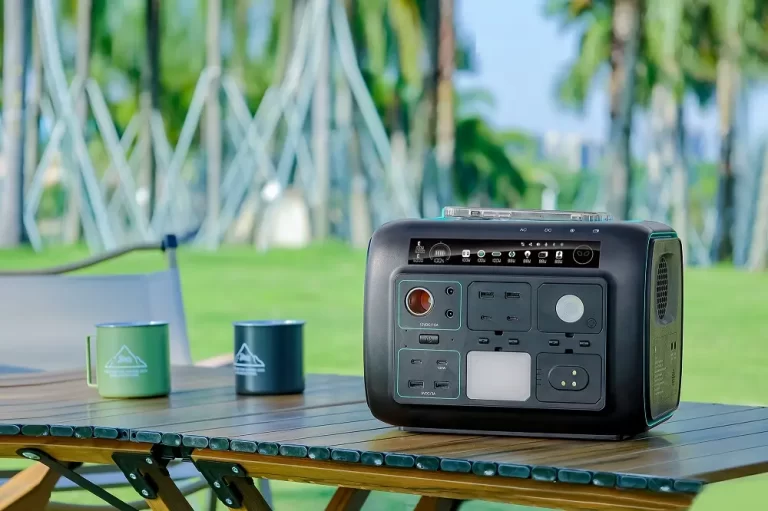This review of the best solar generators for camping will focus mainly on the power station and will indicate the best solar panel to pair up with every generator.
Chances are you won’t gear up for a mountain expedition as you would for a vacation camping trip. With that in mind, here is an in-depth comparative study of solar generators for a camping trip.
This review is aimed at any outdoor enthusiast who would like to know how to power their essentials and more.
Let’s start!
5 Main Characteristics Of A Solar Generator For Camping
Solar Generators are relatively new to the market, therefore most of you might not be totally familiar with their features and abilities.
No worries!
Here is a summary of the main criteria used to select the best generators.
Solar Generators have three main functions:
- Produce electricity from the sun
- Store electricity in lithium batteries
- Convert electricity into usable USB, DC and AC power
The best camping solar generators come in bundles that combine both solar panels and power stations. This review focuses on the power station and will highlight which solar panel is suited for each power station.
Have a look below at the main criteria that have been considered for the best solar generators for camping in 2022:
Storage capacity: One of the most important factors to consider when buying a solar generator, this will determine your autonomy. This specification is rated in Wh. Wh measures the energy, e.g., a light bulb of 5W will consume 5Wh, over 1 hour.
Power output: The power that your solar generator can produce will determine the appliances you’ll be able to bring on your outdoor trip. Power is rated in Watt (W).
Number and types of outlets: Another important factor includes what you can plug into your solar generator, from the basic USB and 12V output to 110V/220V AC outlets. All the power stations featured in this review offer AC outlets to connect your electronic gadget and appliances.
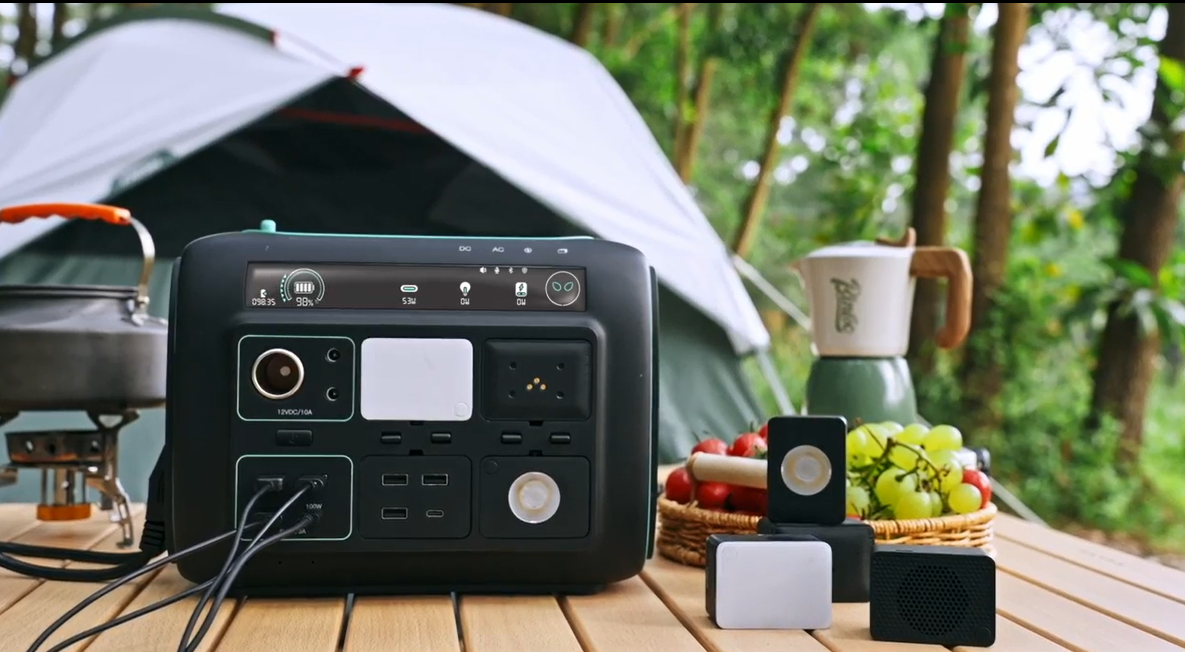
Weight and size: When it comes to camping, the compacity and weight of any object brought on the trip is of the highest importance. Lithium batteries offer the best energy density on the market. Solar generators in this list have been carefully selected – from the lightest for wild expeditions on foot, to the more bulky ones for relaxed camping trips and off-grid cabins.
Battery life duration: The short battery life of lead-acid technology can be rather frustrating (less than 2 years). Luckily, lithium batteries are making this a thing of the past. These batteries offer up to 10 years of maintenance-free service.
Best Solar Generator For Camping – Buying guide
Solar generators are relatively new to the market and you might not be totally familiar with their features and capabilities.
This section will give you a more comprehensive idea of solar generators and their benefits, compared to the classic fuel generators.
What Are Solar Generators?
Solar generators are bundles combining two items:
- Solar panel
- Power station
When exposed to the sun, the solar panel produces electricity that is stored in the power station.
The power station provides electricity to power your electronic gadgets (USB) and your appliances at all times.
Let’s take a look at the two main components:
The Solar Panel
A solar panel is a device that converts sunlight (photons) into electricity. The two main types of solar panels are mono and polycrystalline.
Solar panels also come in different designs: semi-flexible and rigid.
When going on a camping trip, size and weight matter a lot. Solar panels mounted on rooftops are bulky and heavy (usually 12kg per sqm2 for 200W of power).
Luckily many brands have come up with camper-friendly designs:
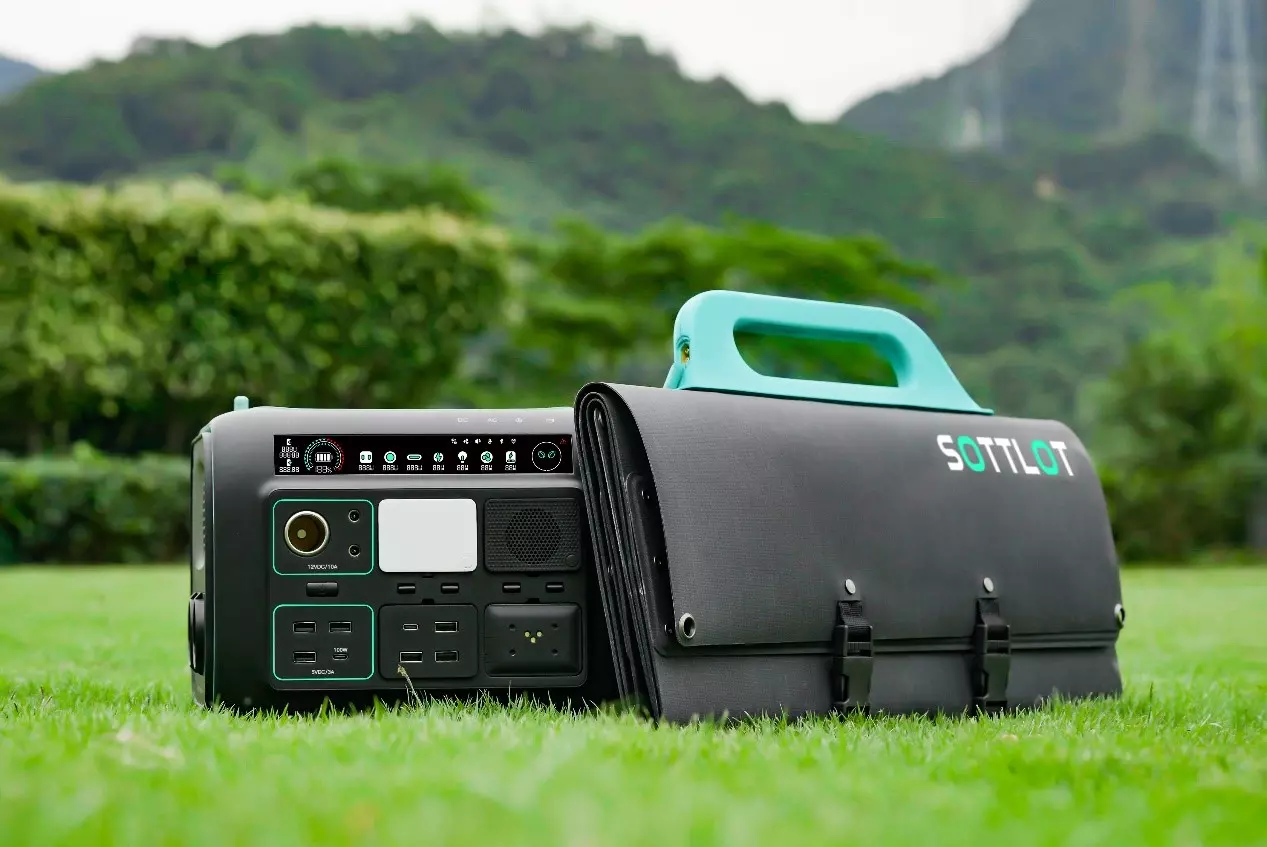
They all come with handles, plugs, and connectors to directly charge your devices.
Based on user experience, the foldable design is the most convenient for a camper, lighter and more compact than the suitcase design.
As our sun is a natural source of energy, its power output varies during the day, and in case of bad weather, the same goes for your solar panel.
In California, a 100W solar panel can produce 500Wh of energy on sunny days in comparison to 150Wh on bad days.
The Power Station
A power station stores your electricity and makes it available at any time for all types of use – from USB charging to power regular appliances.
You might be familiar with power banks, with the ever-increasing use of electronic devices (phones, tablets, laptops, cameras, drones…) we are all looking towards on-the-go charging solutions. Power banks use lithium batteries to store energy and USB ports as output plugs.
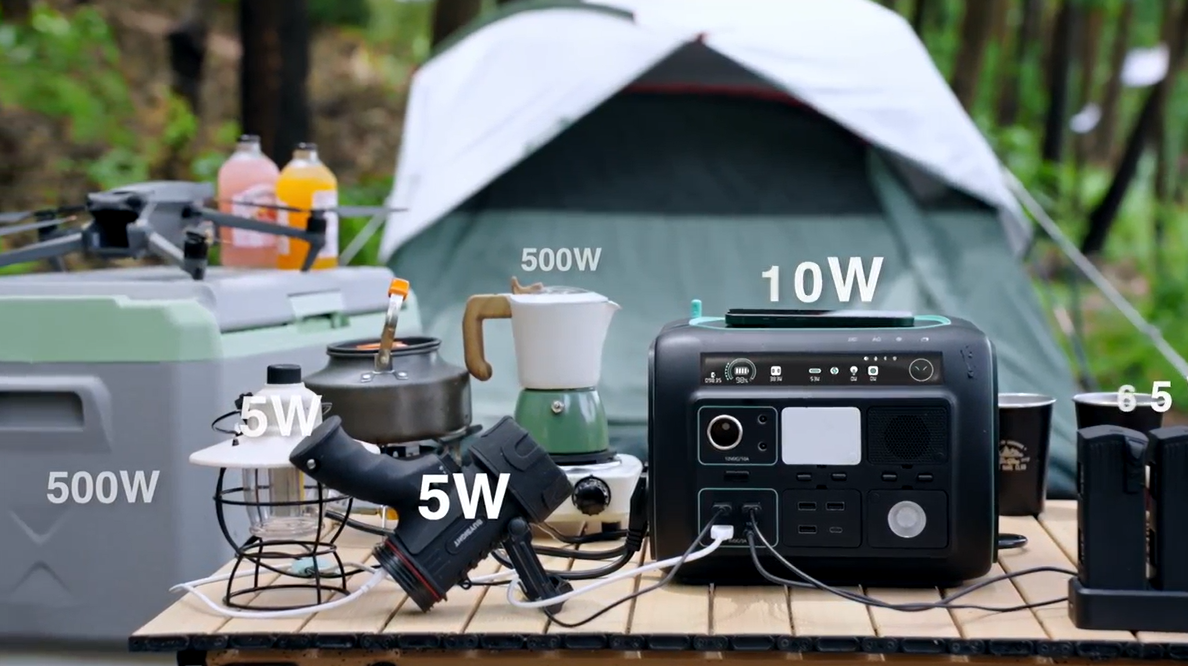
Power stations work quite similarly. However, they are much more advanced and offer a larger storage capacity.
A power station is made of the following parts:
Solar charge controller: The power station has the ability to use electricity directly from the solar panel. The built-in controller – the state-of-the-art MPPT – allows the highest output at all times.
Lithium battery pack with BMS: The main component of your power station, lithium batteries offer the best energy density on the market when it comes to storing electricity. They are light and compact, with long lifespans (up to 10 years).
DC/AC inverter: Electricity produced by solar panels and stored in batteries is DC ( Direct Current), however all our appliances work in AC (Alternative Current) mode. The inverter converts DC to AC (110V,50Hz). Power stations usually have a built-in Pure Sine Wave inverter that will produce clean and reliable power.
AC plugs: One of the main features of the power station is the AC outlet. You’ll be able to plug in all your appliances.
USB connectors: Like a power bank, directly connect your USB devices. Some models offer the latest high speed USB charging.
DC connectors: Not used as much as USB or AC, DC connectors can be useful for specific applications like DC appliances (mini ref, fans….)
Benefits of Solar Generators Over Fuel Generators
Classic fuel generators have been used for decades, but it might be the end of their dynasty with the invention of solar generators, let’s see why:
No noise: Solar generators are quiet. The biggest models only use a cooling fan. Fuel generators are noisy!
No smoke, no pollution: This is green electricity from the sun with zero emissions during production and use.
Maintenance-free: The only maintenance you might have to perform is a gentle cleaning of the solar panel.
No fuel to buy: Your fuel is the sun, it is free to all.
Light weight and easy to move around, some solar generators fit in a back pack.
Versatile and powerful: There is a solar generator for all types of campers – from the shortest day hike to the longest stay in the wild.
Safe and non-toxic for the user: there are no moving parts, no fluids and chemicals to refill.
Average Cost Of A Solar Generator For Camping
The price of your solar generator is mainly dependent on its storage capacity (lithium battery) – the bigger the capacity the higher the cost.
The actual rule of thumb is 1 Wh capacity equal to 1 USD.
100 to 150 USD: Entry-level prices with capacities from 100Wh to 150Wh, 1 AC plug, and basic connectors. Only charges USB devices, AC laptops, and drones.
200 USD to 350 USD: Medium size storage up to 350Wh, multiple AC plugs, high-speed USB, quality products. Charges all types of USB devices, laptops, drones, small household appliances (cooler, projector, TV).
More than 500 USD: Larger systems of 500Wh and more, for longer trips and all types of home appliances (regular refrigerator, power tools…)
Key Features To Look At When Purchasing A Solar Generator
The technical specification of your solar generator might be confusing, below I have summarized the key features for a wise purchase:
Storage capacity: One of the most important feature that will determine your autonomy, it is rated in Wh, a typical phone battery has a 15Wh capacity.
Output plugs: The number and type of USB plugs (look for the high speed USB), the number of AC plugs for any appliances.
Power output: Look for the maximum power that your power station can produce.
Pass-through charging: Check if you can still charge your devices while the power station is being charged.
Built-in MPPT and Pure sine wave inverter: MPPT is a type of solar charger that will ensure the best output at all time, pure sine wave is a type of inverter that produces the cleanest electricity for your appliances.
Frequently Asked Questions About Solar Generators
Here are some of the most common questions about solar generators.
What Can They Power And For How Long?
It all depends on the specs of your power station. For example, a 350Wh power station with a maximum output of 300W can power a 100W appliance for 3.5 hours.
Are They Waterproof Or Splashproof?
All power stations are built using high-quality materials that are waterproof/splashproof
How Long Does It Take To Fully Charge A Power Station?
Usually, there are 3 ways to charge your power station: through a wall plug, through a car plug, or with a solar panel. On average it will take 7 to 8 hours with a wall plug, 6-10 hours with an adequate solar panel, and 12 hours or more with a car plug.
Can I Bring My Solar Generator On An Airplane?
Commercial airlines only allow up to 100Wh worth of lithium battery. However, it is best to check with your particular airline.
Can I Charge And Use My Power Station At The Same Time?
Yes, most of the power stations allow pass-through charging.
Do You Always Need A Solar Panel To Recharge The Power Station?
Solar panels are one of the fastest ways to charge your power station but you can use a wall plug or car plug instead.
How Can I Store My Solar Generator?
Just store it in a dry and dark place.
What Is The Durability Of My Solar Generator?
The solar panel is highly durable – up to 20 years. Depending on the model, a power station can last from 500 to more than 2000 cycles (full charge+ discharge).
How Do I Maintain My Solar Generator?
The great thing is that there is no serious maintenance required. Just clean your solar panel from time to time.
Final Thoughts
With the recent development of lithium batteries and solar panels, we now have access to the ultimate portable power station – the solar generator. No more fuel, no more smoke, no more noise, no more maintenance. You can enjoy unlimited green energy anywhere, anytime!
Source: climatebiz.com Written by Kyle Browning


